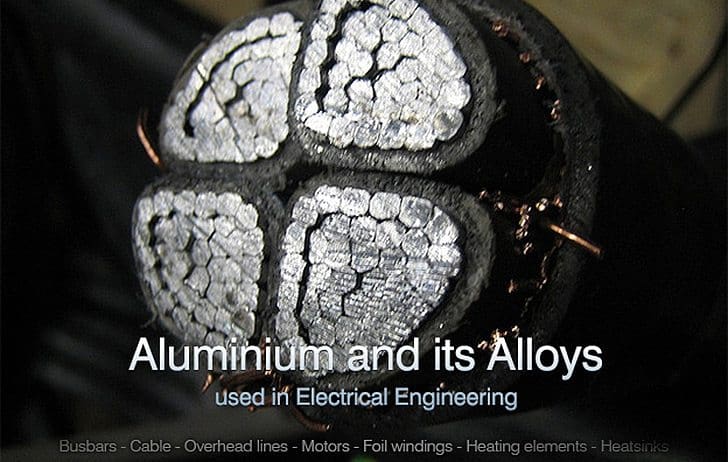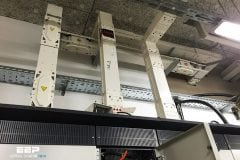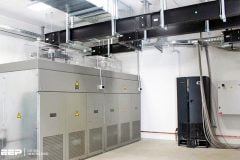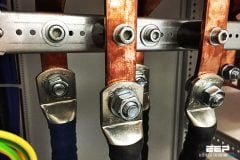
Introduction
Aluminium has been used for many years as a conductor material in almost all branches of electrical engineering. In addition to the pure aluminium, several its alloys are also excellent conductors, combining structural strength with an quite acceptable conductivity.
Aluminum is used everywhere in the electrical industry. Motors are wound with it, high voltage lines are made with it, and the drop from the power line to your house’s circuit breaker box is probably aluminum.
Another advantage is that its price is not subject to wide fluctuations as is copper. There was a sharp increase in the price of copper worldwide in the 1960s and 1970s. This led to many instances of aluminium being used in situations where copper had previously been the norm.
In a few applications, for example domestic wiring and transformer foil-windings identified below, aluminium proved to be less suitable than was initially hoped, so that in the late 1990s there has been some return to copper and the use of aluminium has tended to be restricted to those applications for which it is clearly superior.
There are two groups of British Standard Specifications for aluminium:
- One covering aluminium for electrical purposes, which relates to high purity aluminium with emphasis on electrical properties, and
- The second concerning aluminium for general engineering.
The following are the relevant British Standards:
- BS 215 Part 1: (IEC 207) Aluminium stranded conductors for overhead power transmission purposes.
- BS 215 Part 2: (IEC 209) Aluminium conductors, steel-reinforced for overhead power transmission purposes.
- BS 2627. Wrought aluminium for electrical purposes – wire.
- BS 2897. Wrought aluminium for electrical purposes – strip with drawn or rolled edges.
- BS 2898. Wrought aluminium for electrical purposes – bars, extruded round tubes and sections.
- BS 3242. (IEC 208) Aluminium alloy stranded conductors for overhead power transmission.
- BS 3988. Wrought aluminium for electrical purposes – solid conductors for insulated cables.
- BS 6360. Specifications for conductors in insulated cables and cords.
This group of specifications include grade 1350 (formerly 1E) pure aluminium with a conductivity of 61% IACS and grade 6101A (formerly 91E) which is a heat treatable alloy with moderate strength and a conductivity of 55% IACS.
Aluminium for general engineering uses includes grades with conductivities as low as 30% IACS, but with high structural strength, up to 60% of that of steel, with greater emphasis on mechanical properties.
This is covered by the following British Standards:
- BS 1471 Wrought aluminium and aluminium alloys – drawn tube.
- BS 1472 Wrought aluminium and aluminium alloys – forging stock and forgings.
- BS 1473 Wrought aluminium and aluminium alloys – rivet, bolt and screw stock.
- BS 1474 Wrought aluminium and aluminium alloys – bars, extruded round tube and sections.
- BS 1475 Wrought aluminium and aluminium alloys – wire.
- BS 1490 Aluminium ingots and castings (based on but not identical to ISO 3522).
- BS EN 485 Aluminium and aluminium alloys – sheet, strip and plate.
This group of specifications includes grade 1050A (formerly 1B) with a conductivity of 61.6 IACS, grade 1080A (formerly 1A) also with a conductivity of 61.6 IACS, and grade 1200 (formerly 1C) with a conductivity of 59.5% IACS. These grades are generally used in sheet form, up to 10mm thick, or plate, over 10mm thick.
Further information on aluminium grades and specifications can be obtained from the Aluminium Federation.
Aluminium Applications
Busbars
Aluminium has been used for busbars for more than 60 years and from 1960 onwards is increasingly being used for a whole range of busbar applications due to its light weight and durability.
Tubular aluminium is used exclusively for grid substation busbars at 275kV and 400kV (Gas-Insulated Transmission Line – GIL) and is increasingly being used at 132kV for substation refurbishments and redevelopments.
Aluminium is used in large industrial plants such as smelters and electrochemical plants because of the availability of large sections of cast bars (up to 600mm × 150mm). Aluminium is also used in switchgear and rising main systems because of its lighter weight compared with copper.
Bolted joints in aluminium busbars which are subject to frequent dismantling are frequently electroplated using silver or tin.
Cable
Aluminium is extensively employed as the conductors over 16mm2 cross-sectional area for power cables up to 66kV. Aluminium is not normally found in domestic wiring installations because of the specialized jointing and termination techniques needed to ensure longevity of trouble-free service.
Overhead lines
The a.c.s.r. (aluminium conductor steel reinforced) overhead line conductors are used worldwide for power distribution systems.
A.c.a.r. (aluminium conductor aluminium alloy wire reinforced) have increasingly been used since 1960 because of the elimination of the risk of bi-metallic corrosion and improved conductivity for a given cross-section. A.c.a.r. catenary conductors for supporting the contact wire are also finding favour with railway authorities for overhead electrification schemes because of their lower weight and the reduced risk of theft in comparison with copper.
Motors
Cage rotors for induction motors often employ aluminium bars. Casings are also made from the material as are fans used for motor cooling purposes.
Foil windings
Aluminium is the norm for the windings of capacitors from the smallest types used in lighting fittings to large power capacitors.
Foil windings are suitable for some transformers, reactors and solenoids. Foil thicknesses range from 0.040 mm to 1.20 mm in 34 steps. A better space factor than for a wire wound copper coil is obtained, the aluminium conductor occupying some 90% of the space as against 60% for copper wire.
Heating and cooling are aided by the better space factor and the smaller amount of insulation needed for foil wound coils. Rapid radial heat transfer ensures an even temperature gradient.
The tendency, therefore has been to turn to the use of copper foil for air insulated low voltage windings.
Aluminium foil is, however, almost exclusively used for the HV windings of cast resin insulated transformers as it has a thermal expansion coefficient closer to that of the resin encapsulation material than does copper which thus reduces the thermal stresses arising under load.
Constants and physical properties of very high purity aluminium
| Description | Value |
| Atomic number | 13 |
| Atomic volume | 10cm3/g-atom |
| Atomic weight | 26.98 |
| Valency | 3 |
| Crystal structure | fcc |
| Interatomic distance (co-ordination number 12) | 2.68 kX |
| Heat of combustion | 200 k cal/g-atom |
| Latent heat of fusion | 94.6 cal/g |
| Melting point | 660.2 °C |
| Boiling point | 2480 °C |
| Vapour pressure at 1200°C | 1 × 10-2 mm Hg |
| Mean specific heat (0–100°C) | 0.219 cal/g°C |
| Thermal conductivity (0–100°C) | 0.57 cal/cm s°C |
| Temperature coefficient of linear expansion (0–100°C) | 23.5 × 10-6 per °C |
| Electrical resistivity at 20°C | 2.69 microhm cm |
| Temperature coefficient of resistance (0–100°C) | 4.2 × 10-3 per °C |
| Electrochemical equivalent | 3.348 × 10-1 g/Ah |
| Density at 20°C | 2.6898 g/cm3 |
| Modulus of elasticity | 68.3 kN/mm2 |
| Modulus of torsion | 25.5 kN/mm2 |
| Poisson’s ratio | 0.34 |
Heating elements
Aluminium foil heating elements have been developed but are not widely used at present. Applications include foil film wallpaper, curing concrete and possibly soil warming.
Heatsinks
High thermal conductivity of aluminium and ease of extruding or casting into solid or hollow shapes with integral fins makes the material ideal for heatsinks.
Semiconductor devices and transformer tanks illustrate the wide diversity of applications in this field. Its light weight makes it ideal for pole-mounted transformer tanks and it has the added advantage that the material does not react with transformer oil to form a sludge.
Resource: Newnes Electrical Pocket Book – E.A. Reeves; Martin J. Heathcote
(get this book at Amazon)











Good data source for us up coming Engineers